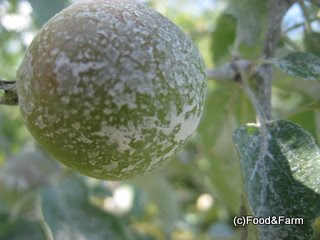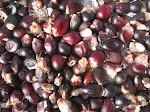
Teresa writes:
In my opinion, red currants are the most beautiful of all the fruits that I grow. They glow ruby red as if lit from within. In the shade of the branches, the long strigs sway in and out of view, half hidden by the dark green, maple-shaped leaves.
Red currants are tart, so they are perfect for sweetened desserts or in combination with sweeter fruits such as raspberries and strawberries. They are very high in vitamin C--one source says 30 times higher than oranges by weight! If you don’t have time to bake a dessert, just add currants to a smoothie or to your favorite muffin or scone recipe. Some people, like my daughter, Marina, even like them plain. Try it, maybe you will too!
In most of Europe, variations on Red Currant Tarts are as ubiquitous as apple pie is here in the States.
Red Currant Tart
Crust:
2 cups flour
1/2 cup cold butter
1/2 cup sieved powdered sugar
1 egg yolk
a pinch of salt
.
filling/topping:
1 pound red currants
2 eggs
4-5 tbsp brown sugar
1/2 cup heavy cream
.
Crust: Sieve the powdered sugar, mix all ingredients, and knead together. The dough will not want to stick together, but keep working it until it does. Form a ball, cover it, and let it rest in the fridge for about half an hour. Then roll it out about half a centimeter thick (dust board with flour as needed) and press into ~5 inch buttered flan tins or Crème brûlée forms. Repeatedly poke a few holes across the bottom, line with parchment paper and add pie weights (I used rice, dry beans work, too) and prebake them in the oven at about 175°C (350°F) for about 10 minutes. Take the crusts out, remove the baking weights and let them cool down.
Filling: Remove red currants from the stems, wash them and pat dry with a kitchen towel. Arrange berries on the dough. Combine eggs with cream and sugar, beat until you have a homogeneous mixture and pour over the currants (about two thirds the height of the red currants, because the mixture will rise a bit).
Bake at 180°C (355°F) in the oven for 20 minutes or until lightly browned, remove and let chill. Dust with powdered sugar, if desired. Best eaten still a little warm or on the next day…














